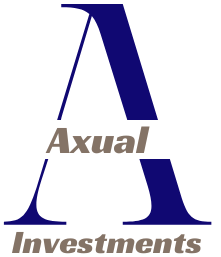Retirement planning is crucial for ensuring financial security and a fulfilling retirement. This article will provide a comprehensive guide to the strategy retirement fund, including various retirement income strategies and investment considerations. By implementing effective retirement planning strategies, individuals can achieve their desired lifestyle and enjoy their golden years.
Key Takeaways:
- Retirement planning is essential for financial security in retirement.
- Strategy retirement funds offer various income strategies and investment options.
- Dividend retirement income strategy involves investing in dividend-paying stocks for passive income.
- Total return approach focuses on a diversified portfolio of stocks, bonds, and cash.
- Single premium immediate annuities provide a guaranteed income stream in retirement.
- Guyton-Klinger guardrails income strategy adjusts withdrawals based on market performance.
Start your retirement planning journey today and embrace the promise of your golden years with confidence and excitement.
Dividend Retirement Income Strategy
The dividend retirement income strategy is a popular approach for generating passive income during retirement. By investing in dividend-paying companies, retirees can ensure a steady stream of cash flow tied to the performance of the stock market. Dividends are distributions of profits made by companies to their shareholders. Retirees who own shares of these companies receive regular cash payments based on the number of shares they hold.
This strategy offers several advantages. First, it provides a consistent income source that can help retirees fund their daily expenses and maintain their desired lifestyle. Second, dividend payments have the potential to increase over time, allowing retirees to keep pace with inflation and potentially grow their income. Lastly, since dividends are not dependent on selling stocks, this strategy can provide a more stable income compared to relying solely on capital gains.
In order to implement the dividend retirement income strategy, retirees should focus on building a diversified portfolio of dividend-paying stocks. This can be achieved by researching and selecting companies that have a track record of consistent dividend payments and a strong financial outlook. Additionally, retirees should consider the sector and industry in which these companies operate to ensure they have exposure to a range of market segments.
| Advantages of Dividend Retirement Income Strategy | Disadvantages of Dividend Retirement Income Strategy |
|---|---|
|
|
“The dividend retirement income strategy provides retirees with a reliable income source that can help fund their expenses and maintain financial stability during retirement.” – Financial Advisor
It is important to note that the dividend retirement income strategy should be part of a comprehensive retirement plan that includes other investment strategies and income sources. Diversification is key to mitigating risk and ensuring a well-rounded retirement portfolio. By combining dividend-paying stocks with other assets such as bonds, real estate, and even annuities, retirees can create a robust income stream that can weather market fluctuations and provide long-term financial security.

Total Return Approach
The total return approach is a retirement portfolio strategy that aims to provide a balanced mix of income, growth potential, and liquidity. By diversifying investments across stocks, bonds, and cash, retirees can create a well-rounded portfolio that generates consistent income while allowing for long-term growth.
With the total return approach, stocks play a crucial role in providing growth and dividend payments. Companies that pay regular dividends can offer retirees a steady income stream tied to the stock market. Dividends are a distribution of profits, and retirees receive cash payments based on the number of shares they own. This can provide a reliable source of income to cover expenses in retirement.
Bonds, on the other hand, offer income through fixed coupon payments. By investing in high-quality bonds, retirees can generate a predictable stream of cash flow. Bonds provide stability to the portfolio and can serve as a source of income during market downturns.
Finally, cash provides stability and quick access to funds. By keeping a portion of the portfolio in cash, retirees can cover any unexpected expenses or take advantage of investment opportunities as they arise. Cash also serves as a buffer during market volatility, allowing individuals to avoid unnecessary asset sales.
The total return approach allows retirees to strike a balance between income and growth. It provides a diversified portfolio that can weather market fluctuations while generating sustainable income throughout retirement. By carefully managing their investments and regularly rebalancing the portfolio, retirees can ensure their financial security and enjoy a comfortable retirement lifestyle.

Table: Asset Allocation in a Total Return Approach Portfolio
| Asset Class | Percentage Allocation |
|---|---|
| Stocks | 50% |
| Bonds | 30% |
| Cash | 20% |
Single Premium Immediate Annuities
Retirement planning involves careful consideration of various income strategies, and one option that retirees can explore is the use of single premium immediate annuities (SPIAs). SPIAs provide a guaranteed income stream that can help individuals create a stable financial foundation during their retirement years.
With SPIAs, retirees make a lump-sum deposit with an annuity company in exchange for regular monthly payments that typically last for the rest of their lives. This arrangement provides retirees with a consistent source of income, similar to a pension or Social Security payments. By choosing SPIAs, individuals can reduce the uncertainty associated with market fluctuations and ensure a reliable flow of funds to cover their living expenses.
One of the advantages of SPIAs is their simplicity. Retirees do not need to navigate complex investment strategies or manage their portfolio actively. Instead, they can rely on the annuity company to handle the administration and distribution of their payments. This simplicity can be particularly beneficial for individuals who prefer a straightforward approach to retirement income planning.
“SPIAs provide retirees with a reliable and predictable source of income, allowing them to maintain their standard of living and enjoy their retirement years without worrying about market volatility.” – Retirement Planning Expert
When considering SPIAs as part of a retirement income strategy, it’s important to carefully evaluate the terms and conditions offered by different annuity providers. Factors such as the annuity’s interest rate, payment schedule, and the financial stability of the annuity company should all be taken into account. By conducting thorough research and seeking professional advice, retirees can make informed decisions that align with their financial goals and circumstances.

| Advantages of Single Premium Immediate Annuities | Considerations for Single Premium Immediate Annuities |
|---|---|
|
|
Guyton-Klinger Guardrails Income Strategy
The Guyton-Klinger guardrails income strategy is a dynamic approach to retirement income planning that helps retirees adjust their withdrawals based on market performance. This strategy provides a framework for managing retirement income while allowing flexibility to adapt to changing market conditions. By implementing the Guyton-Klinger guardrails income strategy, retirees can ensure a sustainable income stream throughout their golden years.
The core principle of the Guyton-Klinger guardrails income strategy is to maintain a balance between sustainable withdrawals and preserving the longevity of the retirement portfolio. Instead of strictly adhering to a fixed percentage withdrawal rule, this strategy takes into account the performance of the stock market to guide withdrawal decisions.
“The Guyton-Klinger guardrails income strategy is designed to help retirees mitigate the risk of overspending during market downturns and allow them to take advantage of market upturns.”
With the Guyton-Klinger guardrails income strategy, retirees establish initial withdrawal rates based on a percentage of their portfolio balance. However, unlike the traditional 4% rule, this strategy incorporates guardrails that trigger adjustments to withdrawals based on market performance.
Key Elements of the Guyton-Klinger Guardrails Income Strategy
- Initial Withdrawal Rate: Retirees begin with an initial withdrawal rate, typically around 4% of the retirement portfolio balance.
- Upper and Lower Guardrails: The Guyton-Klinger strategy sets upper and lower guardrails based on changes in the portfolio value. If the portfolio value increases beyond the upper guardrail, retirees can increase their withdrawals. Conversely, if the portfolio value declines below the lower guardrail, withdrawals are reduced.
- Annual Portfolio Review: Retirees review their portfolio annually and adjust future withdrawals based on changes in the portfolio balance and predetermined rules.
- Potential for Higher Income: By allowing for adjustments based on market performance, the Guyton-Klinger guardrails income strategy provides the potential for higher income during favorable market conditions.
- Protection Against Overspending: This strategy helps protect retirees from depleting their retirement savings too quickly during market downturns by reducing withdrawals.
| Pros | Cons |
|---|---|
| Flexibility to adjust withdrawals based on market performance | Requires regular monitoring and assessment of the retirement portfolio |
| Potential for increased income during favorable market conditions | Withdrawal adjustments may result in fluctuations in monthly income |
| Protection against overspending during market downturns | May require professional guidance to implement effectively |
Implementing the Guyton-Klinger guardrails income strategy requires careful monitoring of the retirement portfolio and a comprehensive understanding of market conditions. Retirees who choose to adopt this strategy may benefit from working with a financial advisor who specializes in retirement income planning to ensure proper implementation and adherence to the strategy’s principles.

Bucket Income Strategy
The bucket income strategy is a popular retirement income strategy that provides a structured approach to managing funds during retirement. This strategy involves dividing one’s retirement savings into three buckets: short-term, medium-term, and long-term. Each bucket serves a specific purpose and is invested in different types of assets to meet varying income needs and timeframes.
The short-term bucket is designed to cover immediate expenses and emergencies. It typically consists of cash and short-term investments that are easily accessible and provide liquidity. This bucket ensures that retirees have enough funds to meet their short-term financial obligations without having to rely on long-term investments that may be subject to market volatility.
The medium-term bucket addresses medium-term expenses and is invested in assets such as bonds, growth and income funds, and other relatively stable investments. These assets offer a balance between income and growth potential, providing retirees with a steady stream of income while still allowing their investments to grow over time.
The long-term bucket is focused on long-term growth and is typically invested in a diversified portfolio of stocks and other high-growth assets. While this bucket may experience short-term fluctuations in value, it is designed to provide long-term appreciation and generate higher returns. By investing in long-term growth assets, retirees can potentially keep pace with inflation and fund their long-term financial goals.
The bucket income strategy offers a simple and effective way to manage retirement income and expenses. It provides retirees with a clear structure for their investments, ensuring that funds are allocated appropriately based on short-term and long-term needs. By diversifying investments across different buckets, retirees can balance risk and reward while maintaining a reliable stream of income throughout their retirement years.

Investment Considerations
When it comes to retirement planning, effective investment management is crucial for achieving financial security and growth. Retirement fund management involves making informed decisions about the allocation of your retirement savings across various investment vehicles.
One important consideration is retirement fund diversification. Diversifying your retirement portfolio involves spreading your investments across different asset classes, such as stocks, bonds, and other assets. Diversification helps manage risk and maximize potential returns. By investing in different asset classes, you can reduce the impact of market volatility and protect your retirement savings.
It’s crucial to assess your risk tolerance when managing your retirement funds. Understanding your risk tolerance will help you determine the right mix of investments for your portfolio. If you have a higher risk tolerance, you may choose to allocate a larger portion of your retirement funds to stocks, which offer higher growth potential but also come with higher volatility. On the other hand, if you have a lower risk tolerance, you may opt for a more conservative approach with a higher allocation to bonds and cash.
Retirement fund management involves considering various investment factors. Retirees should assess their risk tolerance and adjust their investment portfolio accordingly. Diversification is essential to manage risk and maximize returns. It is recommended to have a mix of stocks, bonds, and other assets.
In addition to diversification and risk assessment, it’s essential to stay informed about your retirement benefits, such as Social Security and pension plans. Understanding how these benefits work and planning for them can help ensure a steady stream of income during retirement. Furthermore, it’s important to consider factors like healthcare costs and maintaining an active lifestyle. These expenses can have a significant impact on your retirement budget, so it’s crucial to include them in your financial planning.
By carefully managing your retirement funds and considering these investment factors, you can position yourself for a financially secure and enjoyable retirement.

Conclusion
Retirement planning is a crucial step in ensuring a financially secure and fulfilling retirement. By implementing effective retirement planning strategies, individuals can confidently embrace their golden years. It is essential to assess your current financial situation, set clear goals, and develop a retirement savings strategy.
There are various retirement income strategies to consider, such as the dividend retirement income strategy, total return approach, single premium immediate annuities, Guyton-Klinger guardrails income strategy, and bucket income strategy. Each strategy offers unique benefits and aligns with different risk tolerances and goals.
When managing your retirement fund, consider diversifying your portfolio to manage risk and maximize returns. A well-diversified portfolio may include a mix of stocks, bonds, and other assets. Additionally, understanding Social Security and pension benefits, healthcare costs, and maintaining an active lifestyle are crucial aspects of retirement planning.
Start your retirement planning journey today and take control of your financial future. With careful consideration of retirement planning strategies, investment considerations, and other important factors, you can enjoy a financially stable and enjoyable retirement. Prepare for your golden years with confidence and excitement.
FAQ Strategy Retirement Fund
What is the dividend retirement income strategy?
The dividend retirement income strategy involves building a portfolio of stocks that pay consistent dividends, providing retirees with a steady source of passive income.
What is the total return approach in retirement planning?
The total return approach focuses on creating a diversified portfolio consisting of stocks, bonds, and cash to provide income, growth potential, and liquidity.
How do single premium immediate annuities work?
Single premium immediate annuities (SPIAs) require a lump-sum deposit with an annuity company, and retirees start receiving monthly payments immediately for the rest of their lives.
What is the Guyton-Klinger guardrails income strategy?
The Guyton-Klinger guardrails income strategy involves setting withdrawal “guardrails” based on the stock market’s performance to protect against overdrawing from retirement accounts.
How does the bucket income strategy work?
The bucket income strategy divides retirement funds into short-term, medium-term, and long-term buckets to cover different expense timeframes and ensure financial stability.
What should I consider in retirement fund management?
Retirees should assess their risk tolerance, diversify their investment portfolio, and consider factors such as Social Security benefits, pension benefits, healthcare costs, and maintaining an active lifestyle.

